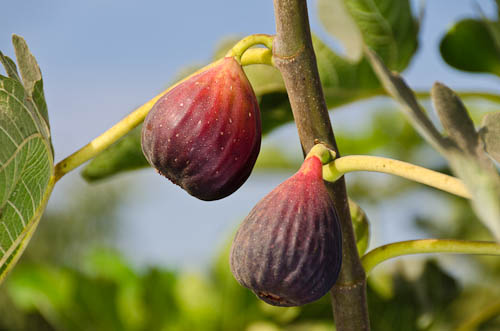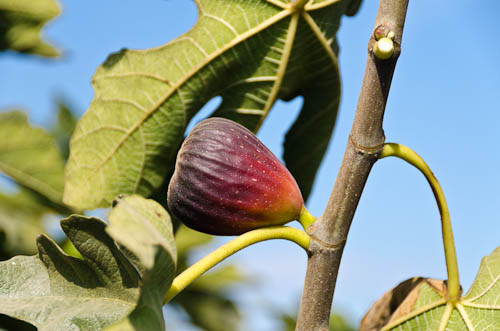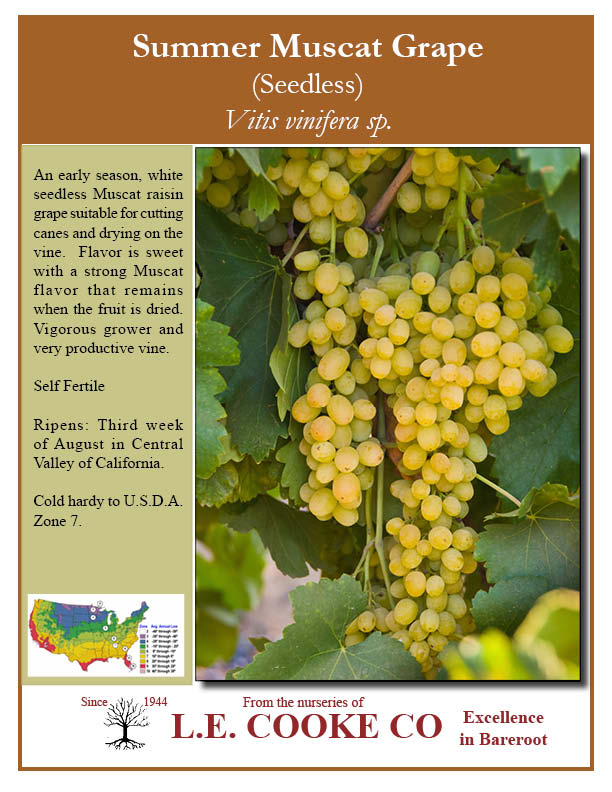Ron Ludekens
Lessons from Trees
I ran across this piece this morning while reading Cybersalt Digest's daily email of clean fun and thought it worth sharing with those in the tree trade.
It's important to have roots.
In today's complex world, it pays to branch out.
If you really believe in something, don't be afraid to go out on a limb.
Be flexible so you don't break when a harsh wind blows.
Sometimes you have to shed your old bark in order to grow.
If you want to maintain accurate records, keep a log.
It's okay to be a late bloomer.
Avoid people who would like to cut you down.
As you approach the autumn of your life, you will show your true colors. You could be Brilliant!
In other words "bloom where you are planted and make the best of what you've got."
Have a great day!
Ron Ludekens 10-27-2011
Jerusalem Artichokes
Our Fall harvest has started on the Vegetables and Berries. (Hint - get your orders in soon if you want the catch the November deliveries).
I went to the processing yard and ran across this trailer load of Jerusalem Artichoke roots/tubers (Helianthus tuberosus) :

Trailer full of Jerusalem Artichoke Roots
I thought you might like to see what you plant in your garden. We plant one of these tubers:

We plant the "Quarter Sized" Jerusalem Artichoke Tubers shown above

We sell a lot more of the "Silver Dollar Sized" Jerusalem Artichokes to Nurseries - shown above
By summer we have rows of plants with flowers that resemble "baby sunflowers":

Jerusalem Artichoke Summner Bloom
In the fall, we cut off the tops and harvest the tubers:

Digger just passed under these plants

Oversized Clump of Jerusalem Artichoke Tubers
More photos here: http://www.creatorspalette.com/Vegetables/Artichokes/Jerusalem-Artichokes/
Here is a detailed 3 page PDF file all about Jerusalem Artichokes and how to plant them: Jerusalem-Artichokes.PDF
Ron Ludekens 10-24-2011
Gravenstein Apple Article
Budwood/Scionwood Sales
Question: Do you sell apple scionwood?
If yes, is there a list of the varieties available?
Thanks,
EARL
Answer: Short Answer - Depends. We sell budwood and scionwood from our extensive orchards if it makes sense as a business. In other words it should make some profit and not provide proprietary wood to entities not licensed to grow it. Minimum of 500 buds to even think about it.
Long Answer:
Here is the process required to process a budwood/scionwood request:
1)Qualify request and take order:
Manager - usually me - takes the call and determines if the request is something we can or want to handle.
- Is the order worth the effort (see rest of this discussion)
- Is the variety restricted by license (patented) - if so, does the buyer have a license to grow it?
- Is the buyer a competitor? We do sell to competitors because in this industry we usually help each other out. After all, weather or other events beyond our control can affect our own source of budwood supply. But if the competitor does not already grow and sell the variety and that variety is important to us, I may not sell the variety if it puts them in direct competition with us. No need to make it easier for them.
- Do we have enough buds - after we cut our own. Sometimes a large request comes before our own is cut and not easy to answer. Sometimes a large request comes after we have cut and still not an easy answer. It could entail a visit to all the trees and see how much vigor and wood is available. This can take some extra time.
- Write up the order and make copies for order invoicing and the production manager/bud cutters
2) Production manager
- Looks up which trees to cut the buds from
- Finds the employees to do the work. If we are not in bud cutting mode for ourselves, this requires pulling people from their crews, getting transportation and coordinating timing.
- - finds the bud cutters who cut the limbs from the trees
- - finds the de-leafers.
3) Bud cutters grab a vehicle and drive to the appropriate orchard(s) and the appropriate tree(s). We have in the neighborhood of 25,000 trees/shrubs/vines in the orchards. Taking ladders where necessary and labels and markers.
4) Cut branches are taken to de-leafers (or bud cutters do it themselves) who trim off the leaves, wrap, label and package the bud/scion sticks. Wrapped bundles are taken to cold storage at the office for tomorrow's shipping (1/2 mile away from where buds are prepared).
5) We like to have the wood sit in cold storage overnight before air shipping late the next day.
6) Next day the UPS/FEDEX shipment is boxed, labeled, weighed and shipped by workers at the office.
7) Customer is invoiced and, if appropriate, credit card charged. Invoices mailed. Bookkeeping posts to account.
8) If charge account, I hope paid on time so we don't generate statements to mail and collect later.
As you can see, we are talking $50-100 in overhead people costs before the buds are actually cut plus cutting and packaging labor and shipping materials. So the order needs to be significant enough to justify the whole process.
Ron Ludekens 10-20-2011
Italian Everbearing Figs

Italian Everbearing Fig
A beautiful day outside. Two storms coming in - smaller one blew through with a few sprinkles overnight. Major rain maker scheduled for tomorrow. Makes the photographer side of me smile - I love clouds and clean air. The agriculture side of me weeps along with the rest of the farmers - Raisins still drying in the fields on paper trays, walnuts and almonds frantically being shaken and swept up, Cotton balls on the plants not ready to pick. Rain can devalue their crops significantly. But my allergies will like having dust washed from the air.
I had to go out and try to capture some images of fruits (before the rain) where I needed more or better mages for my files. While in the Fig section of the budwood orchard, I ran across this dependable, heavy bearing variety - Italian Everbearing Fig. Had to share some images of the fruit just begging to be plucked.

Italian Everbearing Fig
Lot of other fig photos taken as well. Osborne Prolific, White Genoa, White Kadota and Texas Everbearing. If time and weather permits, might have some fig jam in the near future!
Ron Ludekens 10-4-2011
Rare Fruit Growers Meeting
Last Saturday most of the sales and management staff had the priviledge of joining the local chapter of the California Rare Fruit Growers for their monthly meeting. The meeting was held at the Home of Walter & Brenda Thoma in the foothills just outside Porterville.

Walter Thoma leading us through his extensive orchard
Walter is in his mid 70's (with the energy and drive of someone in his 30's) and over the last 20 years or so has created an amazing home orchard of edible fruits suitable for the hot climates of this Central Valley. He works from sunrise to sunset in this expansive orchard. We toured greenhouses, watched him climb date palms with his homemade palm lift, walked through tunnels of grape vines draped over elaborate home made trellises (arbor might be closer) and picked/tasted all sorts for great fruit. If you like fruit (and everone here today did) this was a very special treat.

On a warm day, it was nice to tour under the many grape canopies.
We met Walter some time back and he introduced us to the Panache "Tiger" Fig. It was from his tree that we got our first cuttings of this popular and exotic fig. I was most interested in getting photos of ripe fruit since we will shortly be having the Panache "Tiger" Fig in our catalog for sale. The tree was loaded and I had many opportunities to take photos. Later we got to eat from a plate full of them at lunch.


Panache "Tiger" Figs

Briefly thought we had a special find - but alas two different vines appearing as one cluster.
The tour ended with a short business meeting of the CRFG Chapter and then a feast for lunch - most from the orchard we just toured.

Had a feast from the garden
It is the members of California Rare Fruit Growers and other groups like this with passionate interest in edible fruits that make our backyard orchards and gardens so much better. It is members like these who are always the first to try new varieties and often write the articles for others to read in the press. These same good folks also push the fruits into new climate zones and discover that chilling hours are often lower than first conservatively estimated. Those of us that enjoy great tasting fruit have a lot to be thankful for these pioneers that constantly bring new discoveries to the light of day. More images from this day here: CRFG Tour
Ron Ludekens 9-26-2011
Coffeehouse Jam
We have a lot of awesome people working for L.E. Cooke Co and last Sunday I got to see a number of them in action outside of work.
Tom Fetch (Sales Manager) volunteers at the Tulare City Library helping tutor others in the Adult Literacy program (Tulare Read). Each year he has also helped do some fund raising by putting on horticultural classes about edible landscaping or pruning. This year he coordinated a much larger project called "Coffeehouse Jam". Musicians and artists were invited from the local area to perform and sell products with a percentage of the funds going to support the Tulare Read program.

Tom is a musician in his spare time (not sure where he finds that since we keep him exceedingly busy). And so is Lloyd Cassidy - another one of our long time sales staff. It is not uncommon to see them plucking strings together in one of their offices (on breaks of course). Both were performing separately in the Coffeehouse Jam. Even Lloyd's daughter performed with a very excellent ensemble from her school as the opening act.
Lloyd 's group called "Messomojo" has been playing together for a number of years. I have heard Lloyd play several times before and in my opinion, I rank his guitar skills up with the best of them (Carlos Santana comes to mind). This Sunday's performance displayed his wide range of styles and pleased the crowd.

Lloyd Cassidy with one of several guitars
Tom played last with his unique style (my musical illiteracy jumps out here - something "Flamingo" comes to mind). It was easy listening and comforting - first time I had heard him play. I liked it and bought a CD. I'll put a plug in for his new music CD which you can taste here: Slugfingers (Love the graphics!)

Tom Fetch on one of his several guitars
I think what impressed me most was there was a number of sales staff and office staff that came to the performances and stayed to the very end. Afterwards they all pitched in to help disassemble and put everything away leaving everything spotless. It was a long day for everyone and all happily volunteered. I truly get to work with special people and I am blessed by them.
Ron Ludekens 9-27-2011
Seedless Muscat Grapes
Question: Are there seedless muscat grapes? Where do you fine theme. When does the grape ripen?
Thank You
Anna W. - San Jose, CA
Answer: Yes - we grow the Summer Muscat which is seedless. Ripens in August. More information here: Summer Muscat Grape
More photos here: Summer Muscat Grape Photos
Call your local retail nurseries in San Jose or surrounding areas. If they don't have them today, they can order them for delivery in January.
Ron Ludekens 9-7-2011
Fruiting Mulberries for Austin
Question: I live in Austin, tx zone 8. Alkaline, shallow clay soil with hot, dry summers. Would the Pakistan, Black Beauty or Persian mulberry do well here? Which would you recommend. I tend to like fruit on the sweeter side.
Do you also have a local retail nursery you can recommend in the area ?
Thank you.
Asha - Austin, TX
Answer: I think your comment about hot, dry summers is an understatement based upon this record breaking year you have been having! Hope rain comes your way soon.
You have a lot of great independent retail nurseries in and around Austin and we sell to most of them so I would get myself in hot water recommending one over the others. I will list them below with their phone numbers for you to call. If they do not have any in stock, they can order them to arrive in January (bareroot delivery).
Which ones to chose? First, they are all budded on Russian Mulberry rootstock - a tough, cold hardy rootstock that grows well nearly everywhere. It will handle alkaline and clay. Mulberries will require water although once well established they are pretty drought tolerant. We can show you neglected mulberries in New Mexico where the weather is harsher than yours and surviving with no care from landlords. The shallowness of your soil gives some concern for any tree. If you can break through your hard-pan so the roots have somewhere to go for support and deeper water, you would be more successful.
The Pakistan, Black Beauty and Persian all have excellent fruit. (Type in "mulberry" in the search box above for more articles/photos about fruiting mulberries). All should produce well in your climate although I hesitate greatly about the Pakistan. As a mature tree it will do well, but we find the youngest trees just out of our field harvest are not hardened off enough for cold weather in its first year. Once you get it beyond the first winter, it should do well. All three come from harsh climates (cold and hot) in the Middle East. Although everyone is impressed by the long, good tasting Pakistan fruit, because of first year tenderness risk, you will be safer to enjoy the Persian or Black Beauty trees and fruit. The Black Beauty is a smaller growing tree (or bush) so the choice between these two is usually over mature size desired. Both come in tree or bush forms.
Here is a list, in alphabetical order, of nurseries in the Austin area which buy from us based on 2011-12 orders. This list will be obsolete in successive years since things always change. You can call them to see if they have or will order the trees you want.
Barton Springs Nursery (Austin) - 512-328-7889
Green 'n Growing (Pflugerville) 512-251-3262
Hill Country Landscape (Austin) - 512-258-0093
It's About Thyme (Austin) - 512-280-1192
McIntire Garden Center (Georgetown) - 512-863-8243
The Natural Gardener (Austin) - 512-288-6113
Olde Thyme Gardens (Taylor) - 512-352-3147
Red Barn Garden Center (Austin) - 512-335-8093
Sledd Landscape Nursery (Austin) - 512-478-9977
Vincent Landscapes (Austin) - 512-263-5088
Enjoy!
Ron Ludekens 9-7-2011
4-N-1 Pear Pruning
Question: Hi, I just bought a "4-in-one semi dwarf pear for regions with under 500 hrs of chill" grown by you from my local nursery. There is a branch growing low, below all of the grafting. Is this something that will produce or should I prune it off? If it needs pruning, when is the best time to do this? I plan to espalier it later, is there any reason I cannot?
Thanks,
Leo L. San Antonio, TX.
Answer: Hi Leo. Thank you for supporting your local independent nurseries.
The 4-N-1 combination trees have 4 different buds budded where we think the homeowner would best like the branching to start for convenient fruit picking. Each branch is labeled (at least when it left our nursery). Any branches that come out from the trunk below those 4 buds is rootstock and has no value for your future fruit production (other than feed the tree with more food producing leaves). I would cut off that "sucker" - and doing it now is just fine before it gets too big and creates a larger scar.
Cosmetic and minor shape pruning can be done any time. I would hold off doing any major pruning until the tree is dormant this winter when it does not need the leaves to produce food for growth. I like turning 4-N-1 combination trees into espalier trees. I planted a 4-N-1 apple next to a fence and trained the 4 branches along the fence for easy picking and consistent sun. Since the 4 varieties are budded on 4 sides of the tree as opposed to 2 buds on each of two sides on the tree, you will have to carefully train two of the branches to turn sideways. This is easier to do while the branches are young and limber. Otherwise you will need to select a side bud on that variety to train it sideways and eventually cut off the branch pointing the wrong direction.
Remember to keep the 4 branches in balance with each other. If one or more varieties tend to dominate, prune it heavier to reduce its food production for growth which allows the other varieties to catch up.
Hope you enjoy your future bountiful harvest.
Ron Ludekens 9-7-2011


